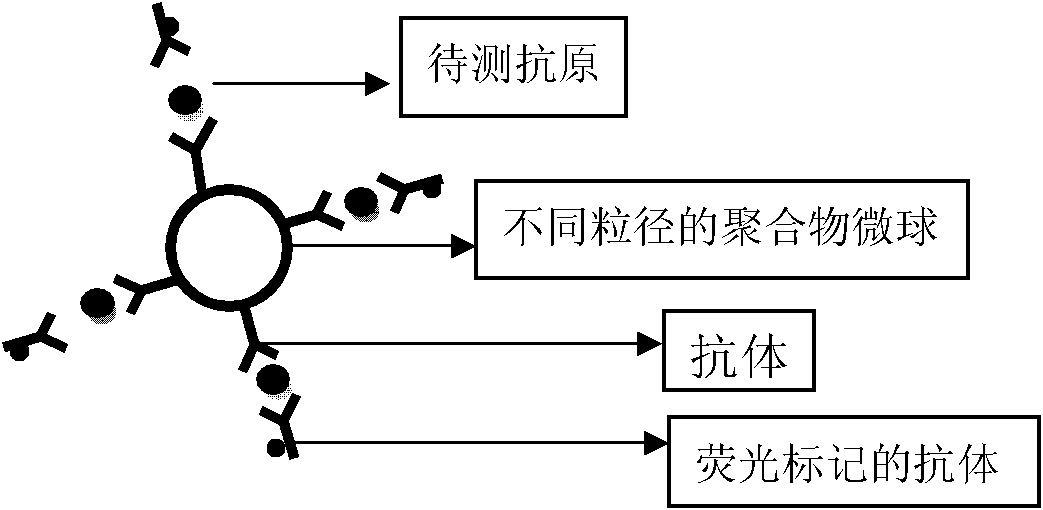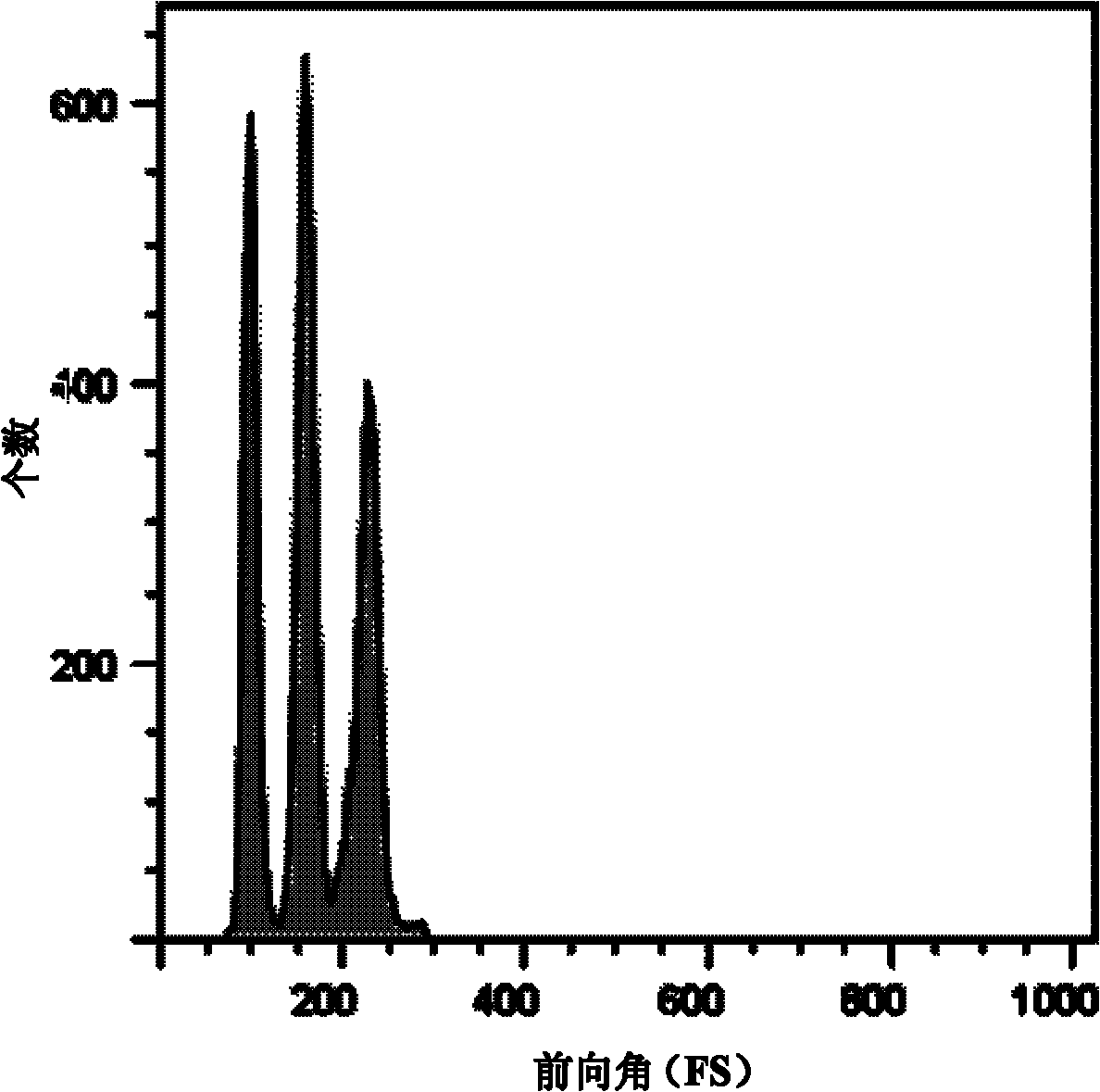Encoding detection method based on polymer microsphere change
A coding detection and detection method technology, applied in the field of biomedical detection, can solve the problems of complex process, prone to leakage, poor stability, etc., and achieve the effects of narrow peak half-peak width, diverse internal structure and small dispersion coefficient of detection spectrum.
- Summary
- Abstract
- Description
- Claims
- Application Information
AI Technical Summary
Problems solved by technology
Method used
Image
Examples
Embodiment 1
[0035] Select 4μm dense polystyrene-acrylic acid microspheres, the dispersion coefficient is 7.1%, and the surface functional group loading rate is 0.505mmol / g; 5μm dense polystyrene-acrylic microspheres, the dispersion coefficient is 5.0%, and the surface functional group loading The ratio is 0.571mmol / g; 6μm dense polystyrene-acrylic acid microspheres, the dispersion coefficient is 5.5%, and the loading rate of surface functional groups is 0.585mmol / g. Three kinds of microspheres with high cross-linking degree, each 5mg, use 100 μL of PBS buffer was dispersed and then sonicated, labeled as 1, 2, 3. After mixing 1, 2, and 3, ultrasonically disperse and detect with a flow cytometer to obtain a one-dimensional histogram and a two-dimensional scattergram, save and print the results, as shown in Figure 2.
Embodiment 2
[0037] Select 5.7 μm porous polystyrene-acrylic microspheres, the dispersion coefficient is 6.4%, the surface functional group loading rate is 0.597mmol / g, 9.8 μm porous polystyrene-acrylic microspheres, the dispersion coefficient is 5.2% , the surface functional group loading rate is 0.633mmol / g, 12.3μm porous polystyrene-acrylic microspheres, the dispersion coefficient is 7.7%, the surface functional group loading rate is 0.693mmol / g, each 5mg, each with 100μL Disperse in PBS buffer and then sonicate, numbered 1, 2, 3. After mixing 1, 2, and 3, ultrasonically disperse and detect with a flow cytometer to obtain a one-dimensional histogram and a two-dimensional scattergram, save and print the results, as shown in Figure 3.
Embodiment 3
[0039] Select 5.7 μm dense polystyrene-acrylic acid microspheres, the dispersion coefficient is 5.0%, and the surface functional group loading rate is 0, 670 mmol / g; 7.3 μm porous polystyrene-acrylic microspheres, the dispersion coefficient is 5.2%, The loading rate of surface functional groups is 0.633mmol / g; 12.3μm dense polystyrene-acrylic acid microspheres, the dispersion coefficient is 5.5%, and the loading rate of surface functional groups is 0.700mmol / g; 5mg each, buffered with 100μL PBS The liquid is dispersed and then ultrasonicated. The labels are 1, 2, and 3. They are mixed together and dispersed ultrasonically. The flow cytometer is used for detection to obtain a one-dimensional histogram and a two-dimensional scatter diagram. Save and print the results. As shown in Figure 4.
[0040] 2. Detection of active biomolecules
PUM
| Property | Measurement | Unit |
|---|---|---|
| particle diameter | aaaaa | aaaaa |
| particle diameter | aaaaa | aaaaa |
| load ratio | aaaaa | aaaaa |
Abstract
Description
Claims
Application Information
 Login to View More
Login to View More - Generate Ideas
- Intellectual Property
- Life Sciences
- Materials
- Tech Scout
- Unparalleled Data Quality
- Higher Quality Content
- 60% Fewer Hallucinations
Browse by: Latest US Patents, China's latest patents, Technical Efficacy Thesaurus, Application Domain, Technology Topic, Popular Technical Reports.
© 2025 PatSnap. All rights reserved.Legal|Privacy policy|Modern Slavery Act Transparency Statement|Sitemap|About US| Contact US: help@patsnap.com



